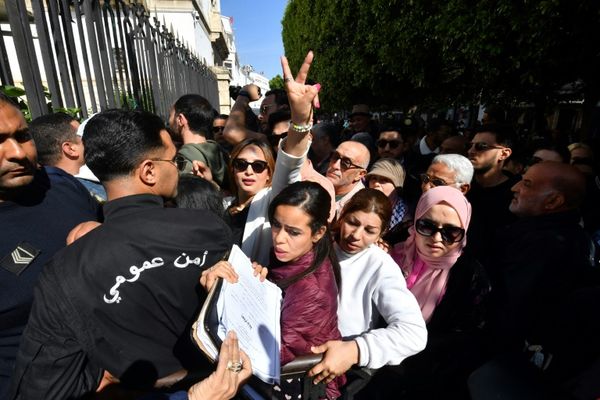
The civil war in the Philippines, home to the world’s longest communist insurgency, has been raging for the past 53 years. Since the Communist Party of the Philippines (CPP) was founded in 1968, followed by its guerrillas in 1969, the Philippine government has been in a perennial conflict with the communists. At the height of the pandemic, President Rodrigo Duterte singled out the insurrection as the country’s top conundrum.
While the conflict itself evokes many questions about both sides, the communists ironically have shown more will than the Philippine bureaucracy to rule the country.
“Red areas,” or areas of political power in the countryside, have been delineated by the CPP and its armed wing, the New People’s Army (NPA), where they say the reach of state forces is the weakest. In these areas, peasant masses are most exploited and more sympathetic to the cause of rebellion.
Jose Ma. Sison, founding chairperson of the CPP, told The News Lens,“CPP cadres and NPA units have been organizing as local organs of political power (people’s committees of self-government), the barrio organizing committees, and barrio revolutionary committees.”
Bobby Tuazon, professor of the University of the Philippines and policy director of the Center for People’s Empowerment in Governance or CenPEG, believes that the rebels root itself in the rejection of the authority of the current Philippine bureaucracy driven by “landlords and comprador-capitalists” as the revolutionaries say.
“The armed revolutionary movement in the countryside has long-established some kind of a shadow government or revolutionary committees among the masses. They are sustained through revolutionary taxes, limited agrarian revolution, elimination of usurious practices against the peasants, production projects and other modes,” Tuazon explained.
Since 1987, on-and-off peace negotiations have occurred between both parties. Hosted and facilitated by the Norwegian government, these proceedings were guided by the Geneva Conventions on International Humanitarian Law. Article 96 of Protocol I of the Conventions requires them to mutually recognize their respective jurisdictions. In Article 1 of the same Protocol, the Filipino communist revolution can consider itself an armed movement fighting as an “exercise of the right of self-determination.” The Philippine government is negotiating not just with revolutionaries but representatives of what the CPP calls the “People’s Democratic Government.”
The meaning of the word “war” is manifold. Is the fighting between the government and the communists akin to that of two nation-states engaged in combat? The CPP has long demonstrated “belligerency.” According to international law, it made the insurgents qualified as members of their society with the capacity to make and enforce their own rules.

The communists boast of a presence in 73 out of 81 provinces in the Philippines, with all major islands and regions populated with their mass base. For them, this is a significant feat more than enough to assert a status of belligerency, or being a sovereign non-state force engaged in armed warfare with the Philippine government.
NPA fighters discuss medical work while inside their campMarco Valbuena, the CPP’s Chief Information Officer, said, “The organs of political power in the village level and upwards are governed by the constitution and rules of the people’s democratic government. Its representatives are directly elected by the people through assemblies.”
It also has its committees to draw up programs and plans for literacy and education, public health, production, and the economy, peace and order, and culture, he said, along with “funds collected from agricultural taxes (1% of additional income gained by the peasants), its income-generating projects or borrowed from various agencies or organizations. It has its own armed and police force (through the village militias and self-defense units), which help enforce its policies and decisions.”
Unsurprisingly, the Armed Forces of the Philippines (AFP) feel differently about recognizing the autonomy of their opponents. By participating in the peace negotiations, it has in principle affirmed the belligerency of their counterparts many times, but there has been a stark change in tone in public statements. The military would like the public to believe the revolution amounts to banditry or even terrorism instead of an act by those who are oppressed and yet sovereign.
In June, Maj. Gen. Edgardo de Leon, the armed forces deputy chief for operations, said that notions of international humanitarian law were being twisted for communist gains. For him, the existence of armed rebels, which put civilians in jeopardy, negates the rules of engagement. Moreover, he argued the notion of belligerency would be inapplicable to non-state actors without domestic law that legitimizes the recognition the CPP asserts.
Sison challenged de Leon’s statement, saying, “The democratic principle is that sovereignty always comes from the will of the people and can be invoked to overthrow a state that turns oppressive or tyrannical even after being duly-constituted or duly-elected by the people. The exercise of the people’s right to rebel against oppression and tyranny is not terrorism but is a democratic act.”
The CPP may not be enough to be considered jurisprudence, but Sison said the French and American revolutions adhered to this ideal. Laws and legal mechanisms bow to movements and collective will instead of the other way around.
Valbuena argued that the Philippine revolutionary government arose as an entity because of the state’s continued neglect of its people. Self-governance is the natural reaction of the abandoned. During the pandemic, he said that the presence of barrio-level committees has been especially crucial.
“In some areas, committees have generated funds to step up the production of palay (rice), root crops, and vegetables to ensure food supplies. They have also pooled funds from members of the barrio who received subsidies to help raise food production. Other areas have set up public libraries where they can make available books, conduct literacy and education programs and provide internet service. Some have established clinics that are run by the village health committee and local medics or health workers.”
Valbuena also lamented the hypocrisy of the Philippine armed forces. “The AFP, a territorial defense army, is the main force in the counterinsurgency. That in itself implies a threat to the territory of the reactionary state. They always refer to villages as ’under the control’ of the NPA. So when they invade said villages, they force people to surrender and have them swear their allegiances in front of the Philippine flag.”
The 53rd anniversary of the CPP is on December 26. Traditionally there is a holiday ceasefire, though there hasn’t been one since 2017. Under President Duterte, any chance of laying down weapons has been slim.
However, this hasn’t stopped the reds from their own festivities. There will be those celebrating Christmas as Filipino citizens. And there will be those also celebrating their hopes for a revolutionary future maybe beside a Christmas tree and a campfire.
READ NEXT: Kitchen Cadres: Cooking With Indignation During Lockdown in the Philippines
TNL Editor: Bryan Chou, Nicholas Haggerty (@thenewslensintl)
If you enjoyed this article and want to receive more story updates in your news feed, please be sure to follow our Facebook.







